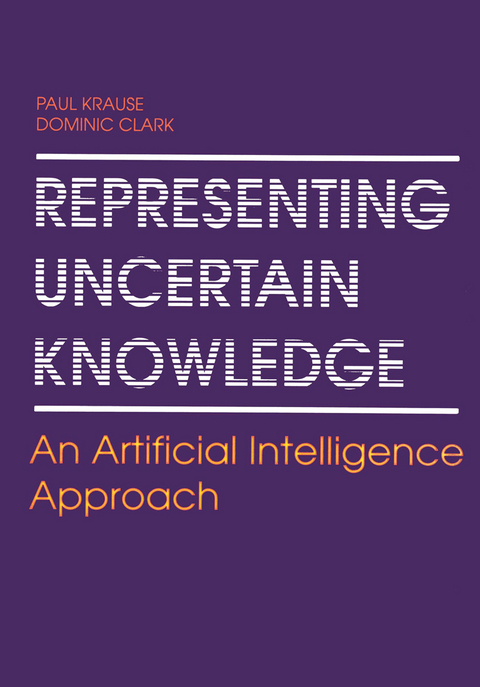
Representing Uncertain Knowledge
Springer (Verlag)
978-0-7923-2433-1 (ISBN)
The representation of uncertainty is a central issue in Artificial Intelligence (AI) and is being addressed in many different ways. Each approach has its proponents, and each has had its detractors. However, there is now an in creasing move towards the belief that an eclectic approach is required to represent and reason under the many facets of uncertainty. We believe that the time is ripe for a wide ranging, yet accessible, survey of the main for malisms. In this book, we offer a broad perspective on uncertainty and approach es to managing uncertainty. Rather than provide a daunting mass of techni cal detail, we have focused on the foundations and intuitions behind the various schools. The aim has been to present in one volume an overview of the major issues and decisions to be made in representing uncertain knowl edge. We identify the central role of managing uncertainty to AI and Expert Systems, and provide a comprehensive introduction to the different aspects of uncertainty. We then describe the rationales, advantages and limitations of the major approaches that have been taken, using illustrative examples. The book ends with a review of the lessons learned and current research di rections in the field. The intended readership will include researchers and practitioners in volved in the design and implementation of Decision Support Systems, Ex pert Systems, other Knowledge-Based Systems and in Cognitive Science.
1 The Nature of Uncertainty.- 1.1 Introduction.- 1.2 Representation and management of uncertainty.- 1.3 The structure of this book.- 2 Bayesian Probability.- 2.1 Introduction.- 2.2 Foundations.- 2.3 Resolution by independence.- 2.4 Belief propagation through local computation.- 2.5 MUNIN - An application of probabilistic reasoning in electromyography.- 2.6 Learning from the children of Great Ormond Street.- 2.7 Discussion.- 2.8 Conclusions.- 3 The Certainty Factor Model.- 3.1 Introduction.- 3.2 Operation.- 3.3 Simple worked example.- 3.4 Discussion.- 3.5 Conclusions.- 4 Epistemic Probability: the Dempster-Shafer theory of evidence.- 4.1 Introduction.- 4.2 A short history of epistemic probability.- 4.3 The Dempster-Shafer theory of evidence.- 4.4 How to act on a belief.- 4.5 Evidential reasoning applied to robot navigation.- 4.6 Discussion.- 4.7 Conclusions.- 5 Reasoning with Imprecise and Vague Data.- 5.1 Introduction.- 5.2 Crisp sets and imprecision.- 5.3 Vague and approximate concepts.- 5.4 Possibilistic logic.- 5.5 Discussion.- 5.6 Conclusions.- 6 Non-monotonic Logic.- 6.1 Introduction.- 6.2 A brief overview of formal logic.- 6.3 Non-monotonic logics.- 6.4 Discussion.- 6.5 Conclusion.- 7 Argumentation.- 7.1 Introduction.- 7.2 Heuristic models of argumentation.- 7.3 Logical models of argumentation.- 7.4 Discussion.- 7.5 Conclusions.- 8 Overview.- 8.1 Introduction.- 8.2 Resumé.- 8.3 Verbal uncertainty expressions.- 8.4 Uncertainty and decision making.- 8.5 Meta-level reasoning and control.- 8.6 Future trends: the convergence of symbolic and quantitative methods?.- References.- Author Index.
| Zusatzinfo | IX, 277 p. |
|---|---|
| Verlagsort | Dordrecht |
| Sprache | englisch |
| Maße | 170 x 244 mm |
| Themenwelt | Mathematik / Informatik ► Informatik ► Programmiersprachen / -werkzeuge |
| Informatik ► Theorie / Studium ► Compilerbau | |
| Informatik ► Theorie / Studium ► Künstliche Intelligenz / Robotik | |
| ISBN-10 | 0-7923-2433-1 / 0792324331 |
| ISBN-13 | 978-0-7923-2433-1 / 9780792324331 |
| Zustand | Neuware |
| Haben Sie eine Frage zum Produkt? |
aus dem Bereich


